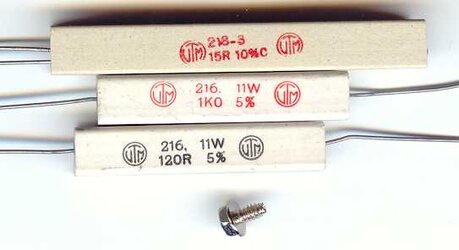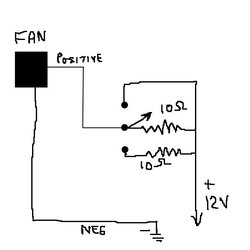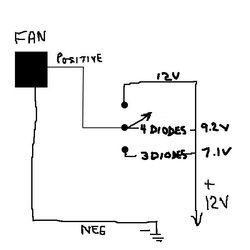I have used the diode approach when I didn't have the right value fixed resistor or the right wattage, which brings up a good point. Make sure the diodes or rectifiers if you choose, are rated for the right current. Small switching diodes, though inexpensive, may not be able to take the amount of current your fan draws. For example, a 1N914 is a common and inexpensive switching diode, but it can only tolerate 200ma continuous forward current. If you were using some of them to drop the voltage to a fan that takes 500ma (1/2 amp), the weakest in the series string would burn out. I typically try to use a rectifier (hefty diode) that is rated for twice the current that my fan needs. If your fan needs 500ma (1/2 amp), then use a 1000ma (1 amp) rectifier. You can get 1N4004, 4005, 4006or 4007 rectifiers for about $.20 each from just about any component store. They take 1 Amp continuous current. The difference between the 4,5,6 or 7 digit represents how high a forward voltage they tolerate and any of them will work just fine at 12V.
If you already have some diodes, but they are not rated for the current you need, connecting them in parallel will increase the current capability. Say you have some 100ma diodes and your fan needs 400ma. Just parallel 8 of them (remember twice the current) to get a capacity of 800ma. You should try to use all the same model diode, or even better the same lot, so that the current is fairly evenly divided among them. The voltage drop across mass produced diodes and rectifiers varies slightly from one to the next. If you parallel four of them and they are not fairly matched, the one with the lowest forward voltage drop will try to take the most current and possible burn out. That's why I try to avoid having to parallel them, favoring instead just getting those where a single one has enough current capacity to handle the fans needs. Less opportunity for failure.
Like resistors, diodes that are used to derive a voltage drop will get warm, even hot. that's where the dropped voltage goes. It is dissipated in the form of heat.
Hoot


